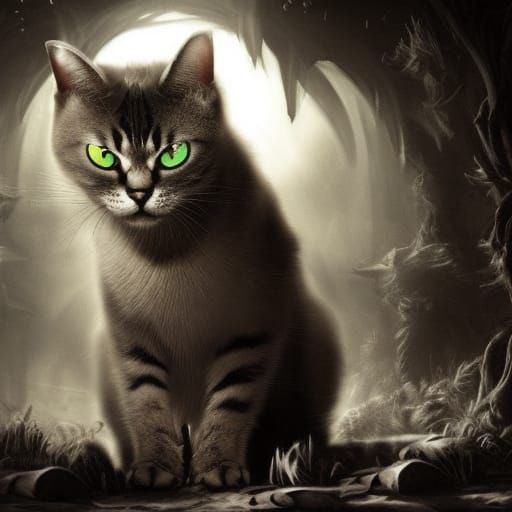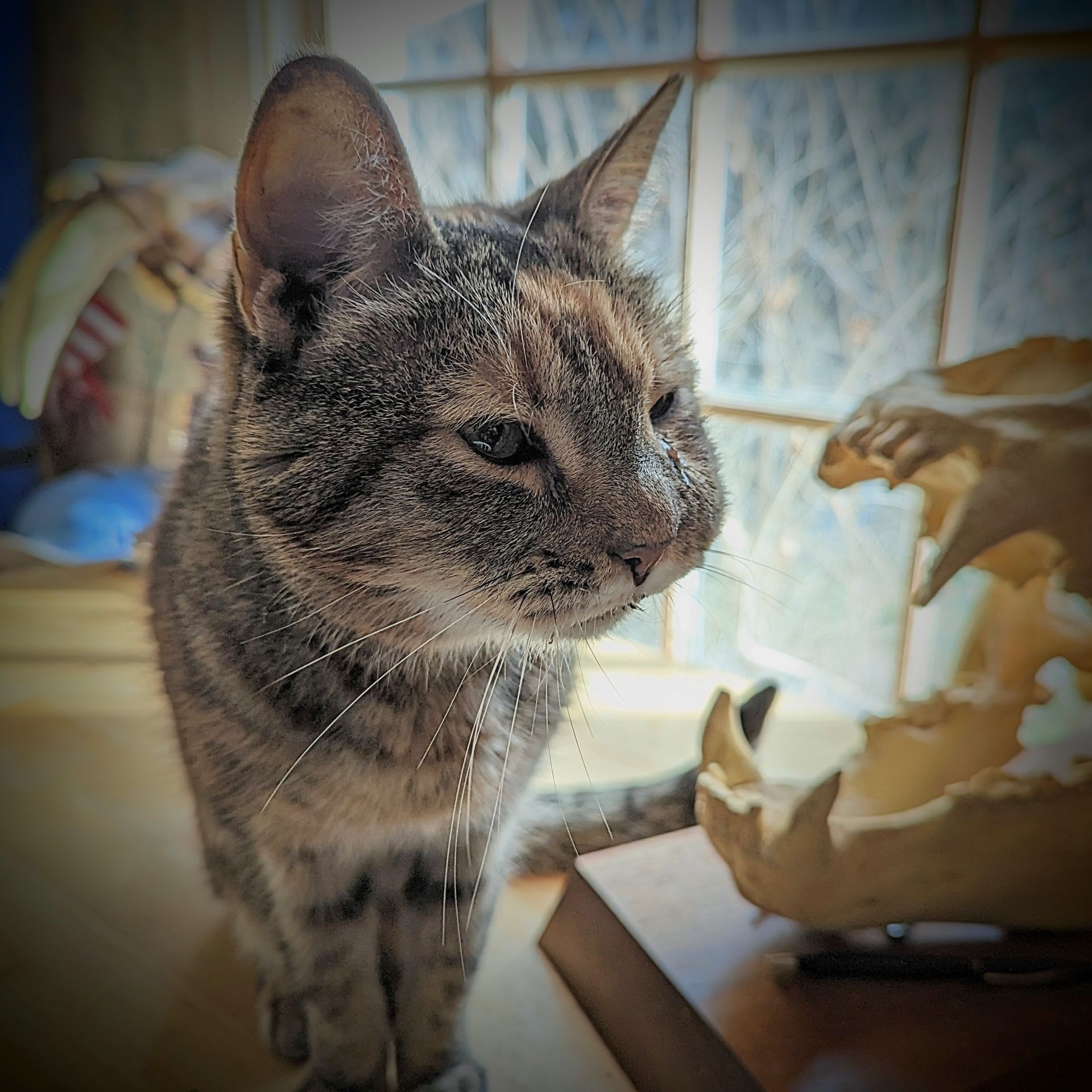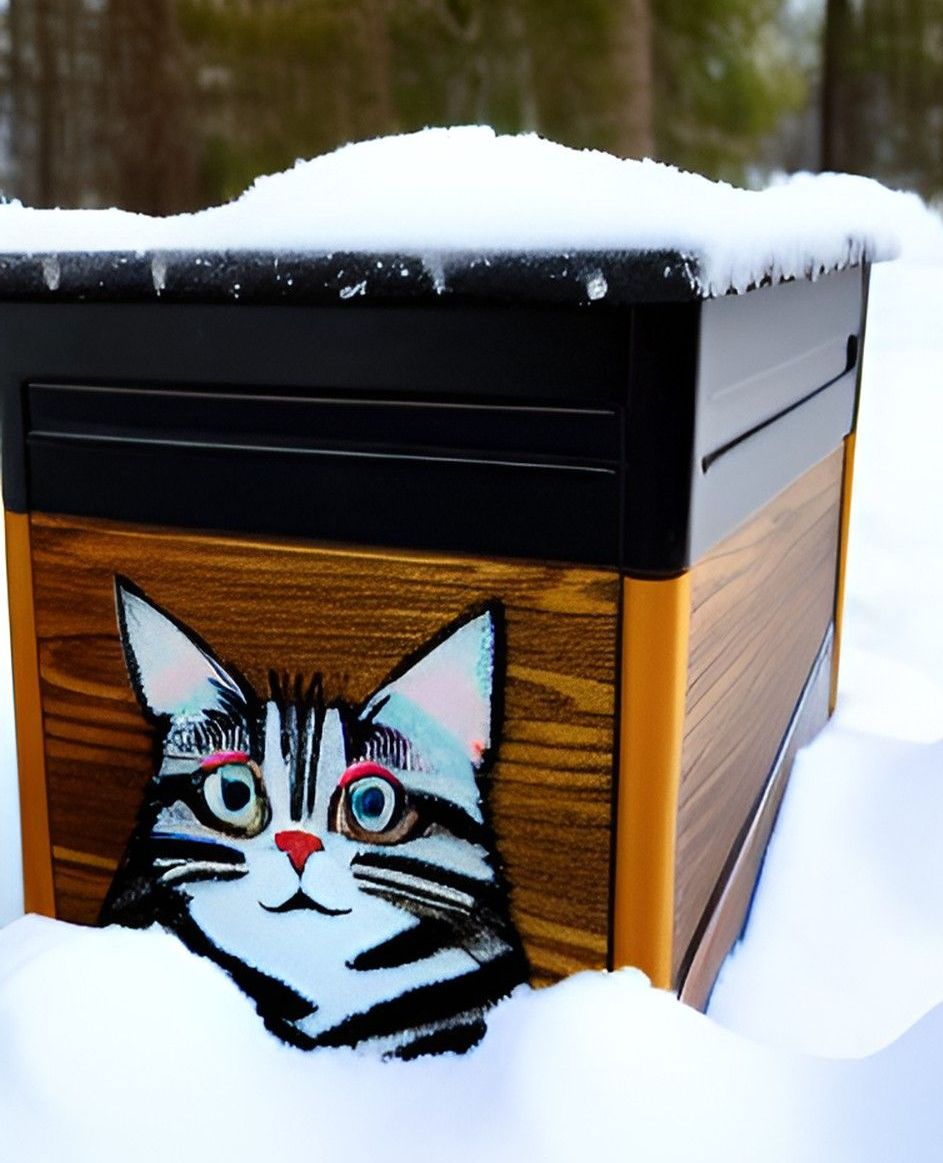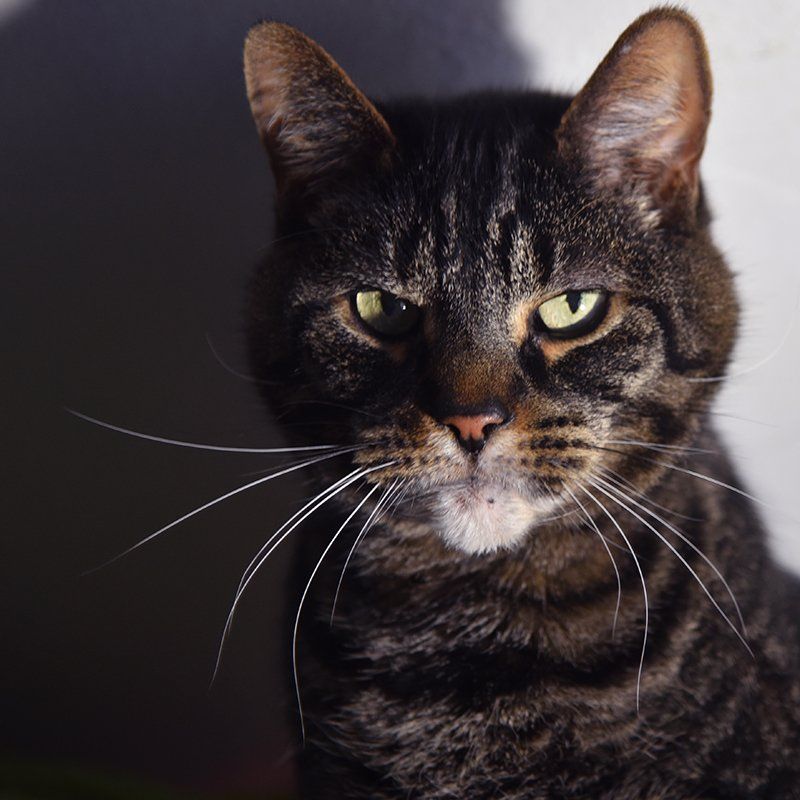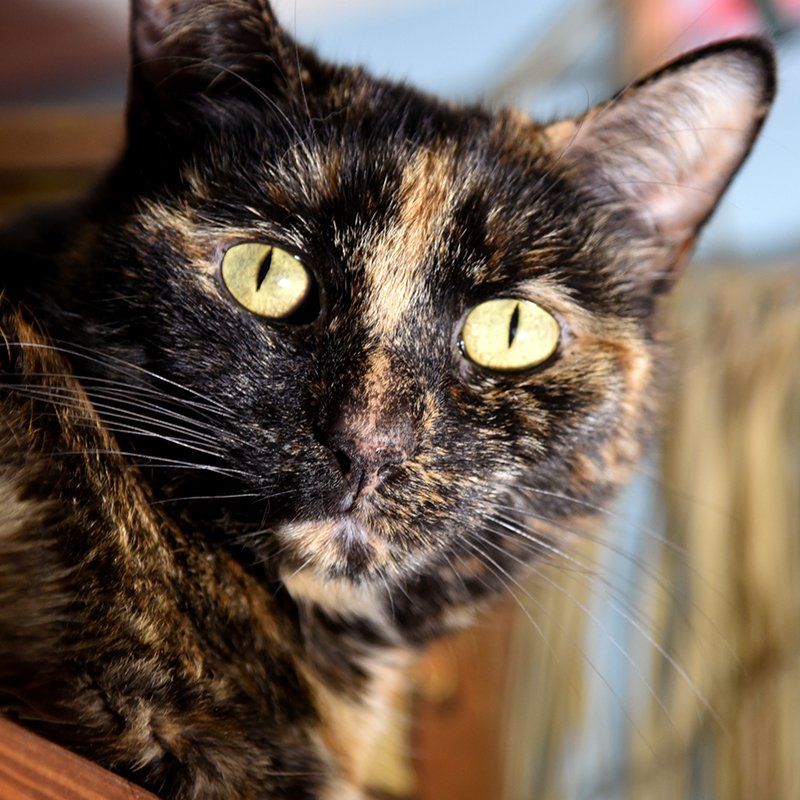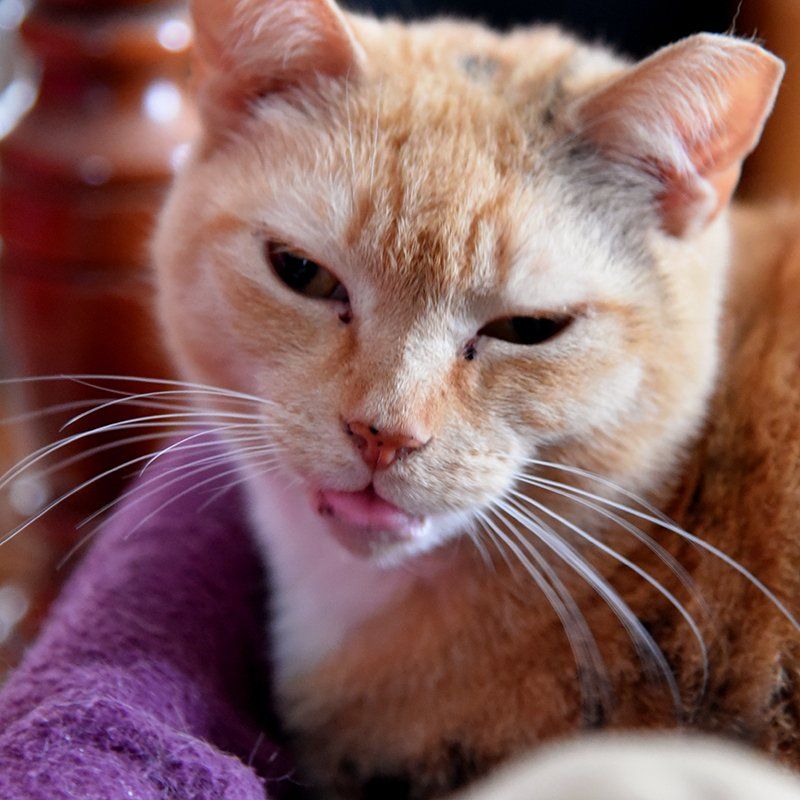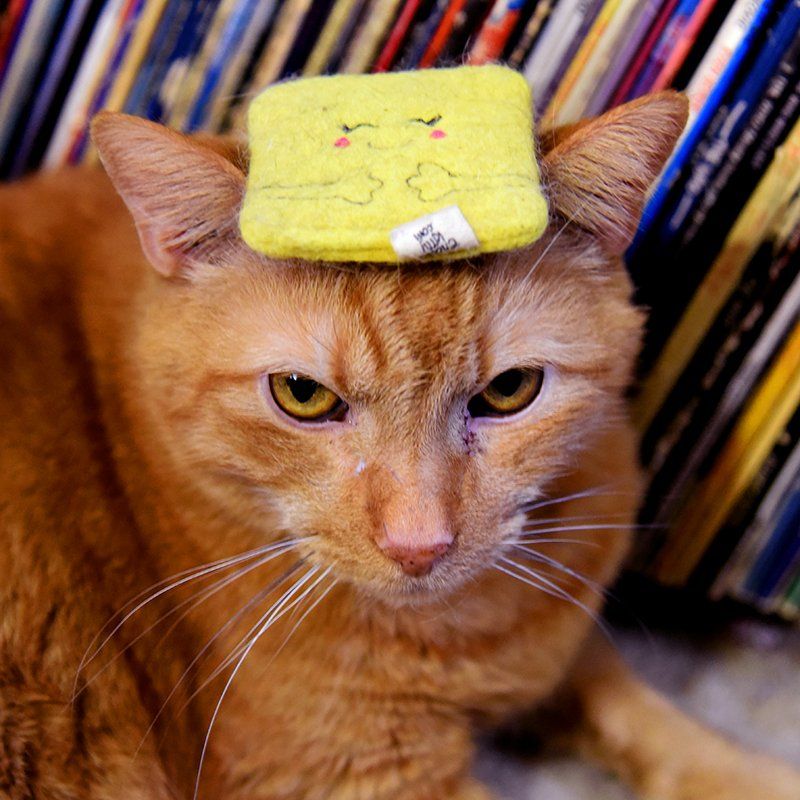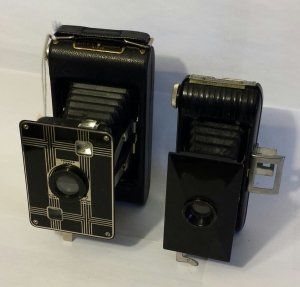The Feline Grimace Scale
How can you tell if a cat is in pain?

Some people say cats are emotionless - their faces are always blank. They don't show emotion. They're just angry all the time (which actually may be true - I mean how would you feel as an apex predator that keeps getting picked up and smooched all over?). And they definitely don't show pain. Well, actually they do show pain, you just have to know what to look for. Today we're going to talk about how we can get an idea of whether or not they're in pain just by looking at their facial expression by using the Feline Grimace scale.
There are reasons why cats, like all carnivores, don't want to show pain. They're carnivores. They have to be the strong ones. Any sign of weakness is going to get them in trouble. So cats tend to be very stoic about their pain.
So what can we do? Cats show facial expressions of pain very subtly, but they’re there. And we can use the Feline Grimace scale to determine how much pain they may be in.
There are five criteria on the Feline Grimace scale. For each of these five criteria, you can score from zero, in which they look pain free, to one, which shows some evidence of some discomfort, to two, which is that it's showing signs of pain. You then total score for all five criteria. If your total score is greater than four, then there's probably pain going on there.
So what are these five points?
Ears - We can look at where their ears are sitting on their head because they do move their ears, but also where they're sitting when they're not actually listening, not engaged with anything, you can tell how they're feeling.
Eyes - You can look at the shape of their eyes if they're wide open, if they're squinting.
Muzzle shape - t heir muzzle, their upper lip, they actually do show a lot of expressions there. It's long and relaxed, or it's munched up.
Whiskers - Their whiskers themselves say a lot. I mean, if they're relaxed and hanging, or if they're sticking straight out,
Posture - and also where they're holding their head. If their heads are high, then they're feeling good.
Ear position:
There are three states in ear position:
Score of 0 - The relaxed, “I'm not in pain” state is the ears are forward, or they're upright,
Score of 1 - Ears slightly off to the side may be an indication of discomfort.
Score of 2 - Ears are low and directed down and to the side. This is not to be confused for when their ears are flattened back in anger or fear, but more like what we call airplane ears, where the ears are just hanging, almost horizontal.
Eye shape:
Score of 0 - Kitty’s eyes are wide open and their alert.
Score of 1 - Pain causes cat’s eyelids to droop a bit, so if the eyes are partially open, that may mean they’re experiencing discomfort.
Score of 2 - Their eyes may be shut or narrowly squinted, just like we might wince if we’re feeling pain.
Muzzle shape:
Here we’re referring to the upper lip. That part of the lip where the whiskers arise.
Score of 0 - In a pain-free cat, this is typically roughly circular.
Score of 1 - The upper lip becomes more elliptical, as though they’re pursing their lips.
Score of 2 - The mouth is almost linear and the upper lip is a very squished ellipse.
Whisker position:
Score of 0 - The whiskers of a comfortable cat hang low and curve toward the ground.
Score of 1 - With some pain, the whiskers begin to stand straight out from the face more.
Score of 2 - When the cat is in pain, the whiskers are very straight and no longer hang downward in a relaxed way.
Posture:
Like humans, cats will hunch when in pain.
Score of 0 - When cats are not in pain, they hold their heads high.
Score of 1 - With some pain, the cat may have its head at shoulder level.
Score of 2 - If their head is down and their tightly hunched, this is a good indication that they are in considerable pain.
Taken individually, each of these criteria could mean nothing. A ‘loafing’ cat may be quite comfortable, but looks like it could score a 2 on the posture scale. If they’re asleep, airplane ears and droopy eyelids are common and do not indicate pain.
For the Feline Grimace Scale to work, all five criteria need to be considered on a cat that is fully awake. A person ought to observe the states of each of these criteria in their cat when they know kitty is healthy and comfortable as a baseline for comparison when the cat may not be feeling well.
Watch a replay of Cat Chat with Penny: "The Feline Grimace Scale"
TL; DR SUMMARY:
Here are some tips and tricks to consider when making an outdoor shelter:
Location: Choose a quiet and secluded spot, away from busy roads or other potential dangers. The shelter should also be in a place that is sheltered from the wind, rain, and snow.
Insulation: Use insulation materials such as straw or foam boards to provide warmth to the shelter. Insulate the floor, walls, and ceiling, but leave enough space for the cats to move around comfortably. If you want to provide an additional layer of warmth, you can use a mylar blanket, which is a reflective, lightweight material that can help retain body heat. However, be sure to use it in combination with insulating materials, rather than on its own.
Size: The shelter should be large enough to accommodate the cats and allow them to move around easily. A good size for a shelter is at least 2 feet wide by 3 feet long by 18 inches high.
Entrance: The entrance should be small enough to keep out predators but large enough for the cats to enter comfortably. The entrance should be placed in a way that protects against the wind and rain.
Bedding: Use bedding such as straw to provide a comfortable sleeping area for the cats.Blankets are generally not recommended for outdoor cat shelters. While blankets may provide warmth, they can also hold onto moisture and can become damp and cold, which is counterproductive for keeping cats warm. Instead, it's best to use insulating materials that provide warmth without retaining moisture, such as straw or foam boards. These materials can trap body heat and create a warm, dry environment for the cats.
Water and Food: Place fresh water and food in the shelter, away from the sleeping area, to prevent spillage and keep the cats well-fed and hydrated.
Safety: Make sure the shelter is sturdy and secure, with no sharp edges or potential hazards that could harm the cats.
Regular maintenance: Inspect the shelter regularly for any signs of damage or wear and tear. Clean the shelter and replace bedding materials as needed.
If possible, provide a second shelter: Provide a second shelter in case one becomes unusable or is occupied by another animal.

